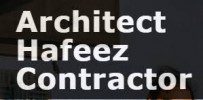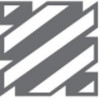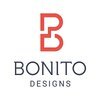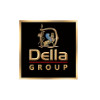Filter interviews by
Padam Interiors Interview Questions and Answers
7 Interview questions
A safety officer ensures workplace safety by implementing policies, conducting training, and monitoring compliance with regulations.
Conduct regular safety inspections to identify hazards and recommend corrective actions.
Develop and implement safety training programs for employees, such as fire drills or equipment handling.
Monitor compliance with safety regulations and standards, ensuring all employees adhere to sa...
A safety officer ensures workplace safety by implementing policies, conducting training, and monitoring compliance with regulations.
Conduct regular safety inspections to identify hazards, such as checking for proper use of personal protective equipment (PPE).
Develop and implement safety training programs for employees, like fire safety drills or first aid training.
Investigate accidents and incidents to determine r...
I would conduct safety audits, implement safety training programs, enforce safety protocols, and regularly communicate with employees.
Conduct regular safety audits to identify potential hazards
Implement safety training programs for all employees
Enforce safety protocols and procedures on site
Regularly communicate with employees about safety measures and updates
My Excel skills are strong, with proficiency in data analysis, pivot tables, and advanced formulas for effective marketing strategies.
Proficient in using formulas like VLOOKUP and SUMIF for data analysis.
Experienced in creating pivot tables to summarize large datasets.
Skilled in data visualization using charts and graphs to present findings.
Able to automate tasks using macros to improve efficiency.
HIRA stands for Hazard Identification and Risk Assessment.
HIRA is a systematic process used to identify potential hazards in the workplace.
It involves assessing the risks associated with these hazards and implementing control measures to mitigate them.
Examples of hazards that may be identified in a HIRA include chemical exposure, machinery hazards, and ergonomic risks.
A permit system is a formal process used to control and manage hazardous work activities.
Permit systems are used to ensure that proper precautions are taken before high-risk work is carried out.
They typically involve obtaining written authorization before starting work in hazardous conditions.
Examples include hot work permits for welding, confined space entry permits, and excavation permits.
Permit systems help pre...
I have over 10 years of experience in marketing, with a focus on developing strategic plans, executing campaigns, and analyzing results.
Developing strategic marketing plans to reach target audiences
Executing marketing campaigns across various channels
Analyzing campaign results to measure effectiveness and make data-driven decisions
Building and maintaining relationships with key stakeholders such as clients, vendor...
Padam Interiors Interview Experiences
6 interviews found

(1 Question)
- Q1. What is permit system
- Ans.
A permit system is a formal process used to control and manage hazardous work activities.
Permit systems are used to ensure that proper precautions are taken before high-risk work is carried out.
They typically involve obtaining written authorization before starting work in hazardous conditions.
Examples include hot work permits for welding, confined space entry permits, and excavation permits.
Permit systems help prevent ...
(2 Questions)
- Q1. Full from of HIRA
- Ans.
HIRA stands for Hazard Identification and Risk Assessment.
HIRA is a systematic process used to identify potential hazards in the workplace.
It involves assessing the risks associated with these hazards and implementing control measures to mitigate them.
Examples of hazards that may be identified in a HIRA include chemical exposure, machinery hazards, and ergonomic risks.
- Q2. Hazard identification risk assessment
Interview Preparation Tips
Contact No : XXXXX
Email id : *****
From Bihar
My total job experience : +3.5 year
Totally experiance in construction and interiors field.
I am interested for job (safety officer)
I applied via Company Website and was interviewed in Sep 2023. There were 2 interview rounds.

(5 Questions)
- Q1. General hse related
- Q2. What is your working platform
- Ans. As per my knowledge my work motive was maintaining good safety culture according to work as per site
- Q3. What would do for safety implementation for site
- Ans.
I would conduct safety audits, implement safety training programs, enforce safety protocols, and regularly communicate with employees.
Conduct regular safety audits to identify potential hazards
Implement safety training programs for all employees
Enforce safety protocols and procedures on site
Regularly communicate with employees about safety measures and updates
- Q4. Daily monitoring personal training daily TBT ,personal instructions and training for unskilled person accordingg to site
- Q5. According to role needed
Interview Preparation Tips

(2 Questions)
- Q1. How are you and
- Q2. What are your hobby
(2 Questions)
- Q1. Excel kaisa h aapka
- Ans.
My Excel skills are strong, with proficiency in data analysis, pivot tables, and advanced formulas for effective marketing strategies.
Proficient in using formulas like VLOOKUP and SUMIF for data analysis.
Experienced in creating pivot tables to summarize large datasets.
Skilled in data visualization using charts and graphs to present findings.
Able to automate tasks using macros to improve efficiency.
- Q2. Ready join kr skte ho

Vijay dubey FMCG products marketing manager
(3 Questions)
- Q1. Gud experience marketing manager
- Q2. How gud experience marketing
- Ans.
I have over 10 years of experience in marketing, with a focus on developing strategic plans, executing campaigns, and analyzing results.
Developing strategic marketing plans to reach target audiences
Executing marketing campaigns across various channels
Analyzing campaign results to measure effectiveness and make data-driven decisions
Building and maintaining relationships with key stakeholders such as clients, vendors, an...
- Q3. How much shlery
Interview Preparation Tips
I appeared for an interview before May 2024, where I was asked the following questions.
- Q1. What are the responsibilities of a safety officer?
- Ans.
A safety officer ensures workplace safety by implementing policies, conducting training, and monitoring compliance with regulations.
Conduct regular safety inspections to identify hazards, such as checking for proper use of personal protective equipment (PPE).
Develop and implement safety training programs for employees, like fire safety drills or first aid training.
Investigate accidents and incidents to determine root c...
- Q2. What are the roles and responsibilities of a safety officer?
- Ans.
A safety officer ensures workplace safety by implementing policies, conducting training, and monitoring compliance with regulations.
Conduct regular safety inspections to identify hazards and recommend corrective actions.
Develop and implement safety training programs for employees, such as fire drills or equipment handling.
Monitor compliance with safety regulations and standards, ensuring all employees adhere to safety ...
Interview Preparation Tips
I applied via Company Website
(5 Questions)
- Q1. Furniture karpanter formane
- Q2. Superwisser work
- Q3. Experience in the 13/years
- Q4. Hettich Haffle Blome and other fitting work
- Q5. Furniture work Aluminiyume work Glass windows work Ddmal windows And upvc windows work
Interview Preparation Tips
Top trending discussions






Interview questions from similar companies

I applied via Naukri.com and was interviewed in Nov 2021. There were 3 interview rounds.
Interview Questionnaire
2 Questions
- Q1. 1. What's is HIRA.
- Ans.
HIRA stands for Hazard Identification and Risk Assessment.
HIRA is a systematic process used to identify and assess potential hazards and risks in a workplace or activity.
It involves identifying hazards, evaluating their potential consequences, and determining the level of risk associated with each hazard.
HIRA helps in developing appropriate control measures to mitigate or eliminate the identified risks.
Examples of haza...
- Q2. HIRA is a risk assessment tool that can be used to assess which hazards pose the greatest risk in terms of how likely they are to occur and how great their potential impact may be. It is not intended ...
Interview Preparation Tips

I applied via Recruitment Consulltant and was interviewed before May 2022. There were 2 interview rounds.

(6 Questions)
- Q1. What is about yourself ..?
- Q2. What about 10 hours working your job..?
- Q3. Job Experience...?
- Q4. Your job related question...?
- Q5. Expect Monthly salary ...?
- Q6. Fire risk assessment...?

I applied via Internshala and was interviewed in Oct 2023. There were 2 interview rounds.
(1 Question)
- Q1. WHY DID YOU CHOOSE HAFEEZ CONTACTOR?
WHAT ARE YOUR STRENGTH IN TERMS OF DESIGNIG?
Interview Preparation Tips
- SOFTWARES

I applied via Referral and was interviewed before Jul 2023. There was 1 interview round.
(2 Questions)
- Q1. What do you enjoy in architecture?
- Q2. What are the different stages in constructions
- Ans.
Different stages in construction include planning, design, pre-construction, construction, and post-construction phases.
Planning stage involves setting project goals, determining budget, and obtaining necessary permits.
Design stage includes creating blueprints, selecting materials, and finalizing plans.
Pre-construction phase involves site preparation, mobilizing resources, and scheduling.
Construction stage is where act...
Interview Preparation Tips
- Basic architecture
Padam Interiors Interview FAQs
Tell us how to improve this page.
Padam Interiors Interviews By Designations
Interview Questions for Popular Designations
- Associate Interview Questions
- Intern Interview Questions
- Business Analyst Interview Questions
- Senior Engineer Interview Questions
- Sales Executive Interview Questions
- Consultant Interview Questions
- Associate Software Engineer Interview Questions
- Graduate Engineer Trainee (Get) Interview Questions
- Show more
Overall Interview Experience Rating
based on 8 interview experiences
Difficulty level
Duration
Interview Questions from Similar Companies
Padam Interiors Reviews and Ratings
based on 69 reviews
Rating in categories
|
Safety Officer
41
salaries
| ₹2.2 L/yr - ₹4.2 L/yr |
|
MEP Manager
7
salaries
| ₹5.7 L/yr - ₹9.6 L/yr |
|
Project Manager
7
salaries
| ₹4 L/yr - ₹8.8 L/yr |
|
Assistant Project Manager
7
salaries
| ₹4.4 L/yr - ₹9.6 L/yr |
|
Planning Engineer
7
salaries
| ₹3.6 L/yr - ₹7.6 L/yr |

Ozone Overseas

Flipspaces

Regalo Kitchens

Decorpot
- Home >
- Interviews >
- Padam Interiors Interview Questions












